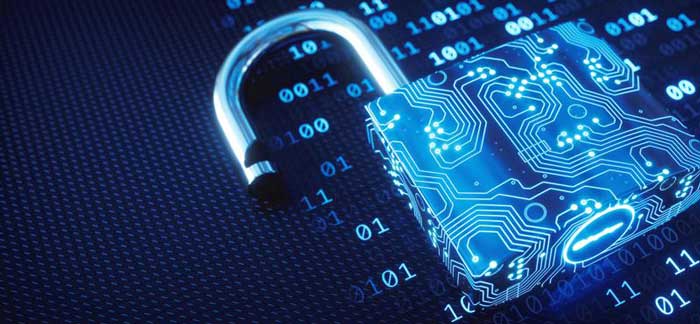Parenting(Age 5 to 8) | Academic | General | Parenting(Age 9 to 12) | Parenting(Age 13 to 16) | May 05, 2021
These Top Educational Cyber Security Resources Will Help Your Kids To Stay Safe From Cyber Crime

The advent of computers in our lives, as well as the necessity of being online every time for official, social or educational purposes, has made us an easy target for cyberattacks. The ongoing pandemic has disrupted the education system. Kids are compelled to adopt e-learning and therefore have become vulnerable to data and personal information theft, ransom extortion, and phishing. It is therefore crucial to equip kids with the information and training to identify risks and to stay safe online. Needless to say, the depth and intensity of the training must be age-appropriate and easily accessible.
Most Common Online Threats To Kids
Most of the threats online are in the form of scams and malware that kids unknowingly download. Here’s a list of common threats that kids often fell prey to.
- Cyber predators - Identity and Data theft Predators are adults who use the internet or social media sites to lure kids to phishing websites and extract crucial information to exploit them with the intention of inflicting emotional or financial harm.
- Mobile Malware With smartphones, more and more kids are moving from desktop to smartphones. They often download malware that can control their devices and data which is often disguised as games or apps.
- Camfecting Desktop webcams or the cameras in smartphones may enable hackers to remotely access and take control of the webcam.
Precautions That Must Be Taken
There are certain basic practices and precautions which kids can observe to protect themselves from cyberattacks. Here are some ways that can help you keep your children safe and away from such attacks.
- Passwords and privacy Your device and online accounts must be protected by strong passwords which should not be shared with anyone that is not known or trusted. Never reveal any personal data such as name, address, school, and phone number. Use secure and encrypted WiFi.
- Invest in good antivirus protection with anti-phishing support. Install a good antivirus application updated with anti-phishing support on all devices and set it on auto-update mode.
- Be cautious about what you are clicking. Do not visit unknown websites. Avoid opening attachments in emails or downloading software from an untrustworthy source.
Educational Cyber Security Resources
Kids are spending more time on the internet these days, and hence are more vulnerable to cybercrimes. It is highly important to teach them strong cybersecurity defense skills to deal with upcoming and advanced cyberattacks.
Here is a list of some of the top educational resources for kids, sectioned into age-appropriate and according to the education level of the kids. Many of these resources are fun and educating at the same time.
Kindergarten
In the present scenario of online teaching, small kids are given devices even before they fully comprehend the power they have in their hands, and thus, they are most vulnerable to cyberattacks. The US government and its departments like the FBI and Homeland security have websites as well as some other resources that teach security protocols to smaller kids through fun games and activities, and some interactive videos.
Following are some resources to teach young ones cybersecurity:
Elementary School (Grade 1 to 5)
With kids transitioning more and more into the digital world where teachers incorporate online educational tools and parents allow children to play games and apps with minimal knowledge of security, they are becoming more prone to cyber-attacks. They are still young to understand all preventive measures and therefore there are several pages and websites where they teach cybersecurity with the help of various fun-filled quizzes, games, activities, and videos.
- https://www.netsmartzkids.org/
- https://sos.fbi.gov/en/
- https://www.esafety.gov.au/kids-quiz
- https://www.pbs.org/wgbh/nova/labs/lab/cyber
Secondary School (Grade 6 to 8)
Kids in secondary school have more knowledge of the digital world compared to many adults, but they lack maturity and use of discretion in handling the power of the internet. They need to be trained in the area of cybersecurity and skills for protection from violent extremism and radicalization. These resources can be super helpful.
High School (Grades 9 to 12) And College
Kids in high schools often have an interest in cybersecurity and computer science. They can step it up by taking online courses or taking part in HACKATHONS, which can even lead to certifications.
Most hackathons also include workshops and networking opportunities for participants to learn new skills and meet other like-minded people. MLH or Major League Hacking is the official student hackathon league, besides many web pages and courses that can help high-schoolers become incident handlers and cyber warriors .
- https://uscc.cyberquests.org/
- https://www.womensafetywing.telangana.gov.in/cybHER/#/
- https://niccs.cisa.gov/formal-education/integrating-cybersecurity-classroom
- http://www.infotectraining.com/
Some More Helpful Resources
- https://us-cert.cisa.gov/ncas/current-activity/2018/03/27/Creating-and-Managing-StrongPasswords
- https://rems.ed.gov/docs/CyberSafetyProtectingYouth_COVID19_508C.pdf
- https://www.mcafee.com/blogs/consumer/mobile-and-iot-security/cybercriminals-target-e ducational-institutions/
- https://www.unigo.com/pay-for-college/financial-literacy/types-of-cyber-security-threats
- https://security.berkeley.edu/education-awareness/back-school-cybersecurity-tips
- https://www.ncsc.gov.uk/collection/mobile-device-guidance/antivirus-and-other-security-s oftware /
- https://www.consumer.ftc.gov/articles/how-recognize-and-avoid-phishing-scam /
The Bottom Line
Many universities also offer courses designed specifically to educate kids to counter cyberattacks. University of Albany, Loyola university, university of Mellow Carnegie, University of Washington, University of Berkley, to name a few.
With the advancements in technology and the increasing trend of online learning, it is imperative to equip yourself with advanced knowledge of cybersecurity to counter cyberattacks and defeat exploitation and manipulations in the cyber world. With the help of these resources, not only kids, but parents and teachers can also secure their technology and personal information from cybercriminals.
















Post a Comment: